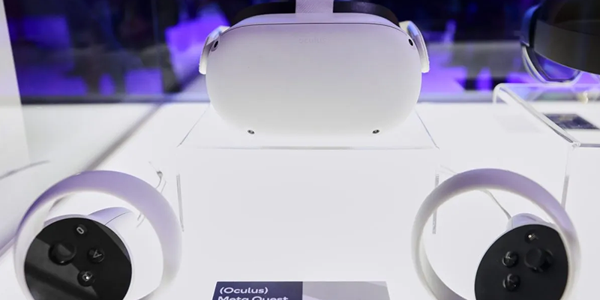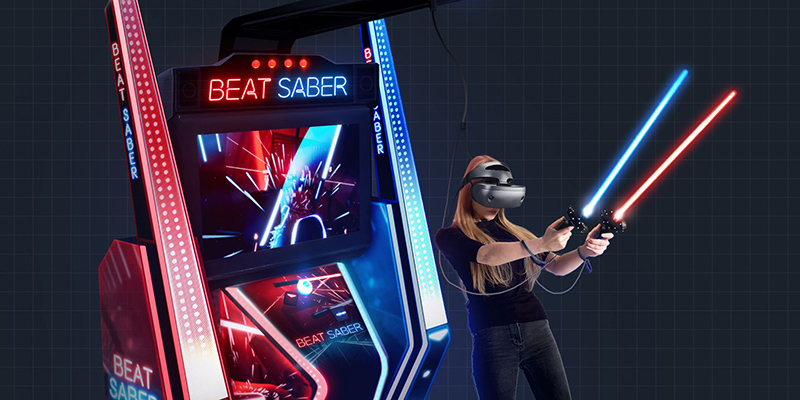A Beginner’S Guide To Virtual Reality Headsets
First, let's talk about VR headsets. Maybe you've noticed people in bulky goggles waving their hands in empty air as if battling invisible dragons. Perhaps you've heard friends gushing about "VR" but don't know where to begin. Not to fret — I'm here to help break it all down. It's all part of your friendly guide to VR headsets; no technical patent is needed.

What Even Is a VR Headset?
It's akin to attaching a miniature TV to your face — but way better. A VR headset is a unit you put on your face that immerses you in a computer-generated experience. It's like entering a video game, a film, or a virtual museum. Screens, sensors, and, when applicable, controllers are used to recreate a sensation that you indeed are present. For instance, if you turn your head, the perspective changes, as in life. Some headsets even monitor your hand movement so you can "touch" objects in virtual space.
The magic is made from the headset (with the screens and sensors held within) and the software (the apps or games you use). High-end headsets have super sharp displays to make the pixels invisible, so you don't see that "screen-door effect" where everything becomes fuzzy.
How VR Headsets Dually Engage Our Senses?
Let’s go a little nerdy — but not too nerdy. VR has a trick: It convinces your brain that you are in a different world. Here’s how:
Screens: Each eye has a tiny screen showing a slightly different image (3D movies also do this) to simulate depth.
Sensors: These monitor your head movements. Turn left? The headset knows and updates the display in real-time.
Controllers: Handheld devices allow interaction in the virtual world. When you poke a virtual button, your controller rumbles as if feeling something.
Computer/Phone Power: Other headsets require a gaming PC or PlayStation to power heavy graphics. Standalone models include computers built into their structure.
The idea is to create a seamless experience. If the headset is delayed, you’ll feel dizzy—that’s why good headsets take speed and clarity so seriously.
VR Headset Types: Which One Is Right For You?
Headsets are not created equal. Let’s put them into categories:
Tethered Headsets
These are wired to a computer or gaming console. They're powerful but require costly hardware. They are the sports cars of VR — smooth and gorgeous but temperamental. Examples:
Meta Quest 3: No wires, but it requires good Wi-Fi.
PlayStation VR2: Compatible with a PlayStation 5. It's great for gamers.
Standalone Headsets
These come with everything baked in: screen, processor, batteries. They're wireless and straightforward to set up. Perfect for beginners. Example:
Meta Quest 2 is budget-friendly and popular. It even has a virtualized VR headset that you can use anywhere on vacation.
Smartphone-Based Headsets
These are essentially goggles for your phone. They are the least expensive tickets but are less immersive. Think of it like Google Cardboard: fun for getting a taste of VR, not so much for long-term use.
Things To Think About Before Making a Purchase
Avoid snagging the sparkliest headset. Ask yourself:
Comfort: How long will you wear it? Opt for lightweight designs featuring adjustable straps.
Resolution: More pixels, less blur. The Meta Quest 3 displays crystal-clear images on its “micro-OLED” screen.
Tracking: How well does it track your movements? Some VR headsets now track hands, while others require controllers.
Contents Library: What can you do with it? Gaming, fitness apps, virtual travel? Make sure the headset works with the apps you'll need.
If you’re just getting started, get a standalone headset that’s about budget-friendly. You can always upgrade later!
Why VR Isn’t Just For Gamers
But wait, there’s more.VR is known for games like Beat Saber (imagine slicing blocks with lightsabers). But it's way more versatile:

Education: Go on a virtual field trip to ancient Rome or dissect a frog without the mess.
Fitness: Spar with a virtual foe or dance through a workout.
Art: Paint in three-dimensional space or sculpt digital clay.
Social: Gather friends in virtual rooms — Zoom, but way more fun .
Museums and schools also use VR to create interactive learning experiences—imagine standing next to a dinosaur or exploring the International Space Station!
Popular Misconceptions About Virtual Reality Head-Mounted Displays
Let's back up and clear up some confusion:
Myth 1: "VR is expensive.
Not anymore! You can begin with a standalone headset for under $300—there's no need to spend $1,000.
Myth 2: “It’ll make me sick.”
Old headsets cause motion sickness, but newer ones have a higher refresh rate, which can help with nausea. Begin with short sessions, and you will acclimate.
Myth 3: “It’s isolating.”
VR can bring people around the world closer together. You can participate in a virtual comedy show or collaborate with friends on a 3D project.
Advice For Your First VR Experience
Ready to dive in? Follow these steps:
Clear Space: Push furniture out of the way. You don't want to stumble over a coach while battling space aliens.
Adjust the Fit : The headset should fit snugly but not too tight—like a hat, not a vice grip.
Start Simple: Download a VR Museum or Job Simulator before delving into intense titles.
Take Breaks: VR can be exhausting. Take a break every 30 minutes to prevent your eyes from getting strained.
What’s Next? The Future Of VR
VR is still growing. Here’s what’s coming:
Mixed Reality (MR) — includes both real and virtual worlds. Imagine holograms of coworkers in your living room .
Sleeker headsets: Future headsets may be less like bulky goggles and more like sunglasses.
Better Social Apps: Virtual concerts that make you feel front-row.
Ready To Explore?
VR has a way now of being even for tech geeks or gamers. It's for anyone interested in new worlds, creative tools , or fun. Begin small, explore apps, and allow yourself to be amazed. Who knows? Your next adventure could be a headset away.
First Step Into Virtual Reality
Now that you have the basics, it's time to pick a headset and dive in. VR is about exploration, whether unboxing a standalone model or borrowing a friend's gear. So what are you waiting for? Poke a virtual button, hike a digital mountain, or poke fun at a cartoonish robot. The future is now, and it's calling your name.